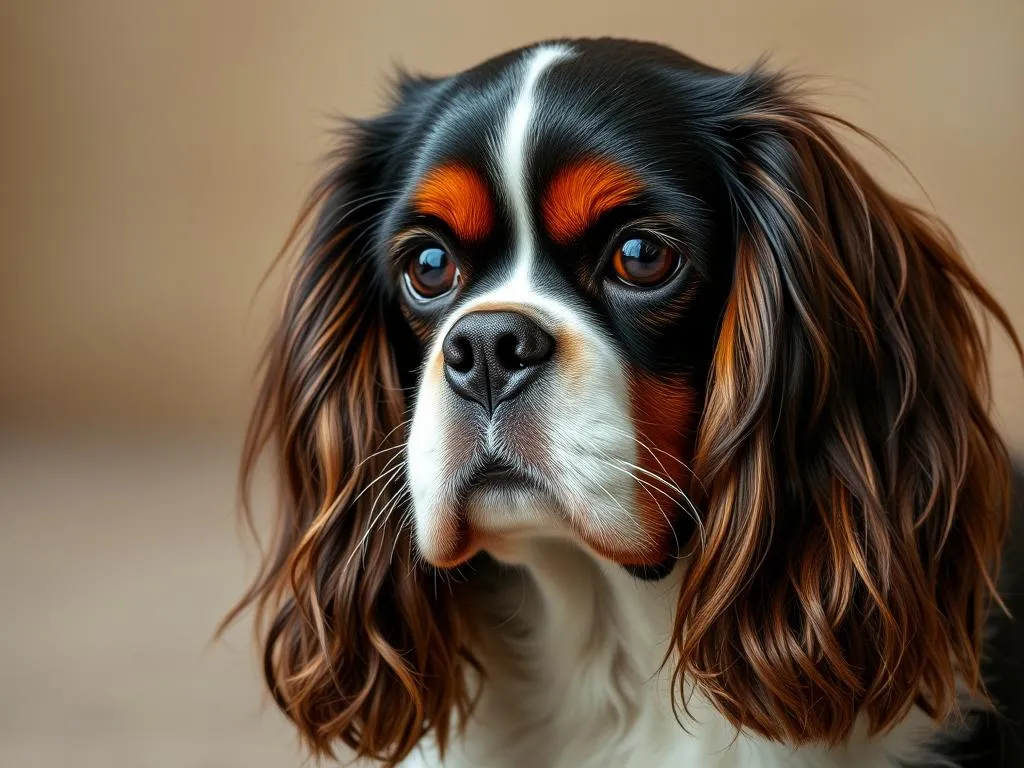
The Cavalier King Charles Spaniel is not just a breed; it’s a beloved companion known for its affectionate nature and charming personality. Understanding this breed is essential for those considering bringing one into their home, as it helps ensure a happy and fulfilling relationship between pet and owner.
History of the Cavalier King Charles Spaniel
Origins and Ancestry
The Cavalier King Charles Spaniel has a rich history that dates back to the 16th century, deeply intertwined with the British monarchy. Their ancestors were popular among royalty, particularly King Charles I of England, who was known to have a fondness for these small spaniels. These dogs were often seen in paintings and royal portraits, showcasing their close connection to high society.
The breed’s development was influenced by various spaniel types, leading to the refinement of their appearance and temperament over the centuries. After the English Civil War, the breed faced a decline, but enthusiasts worked tirelessly to revive the Cavalier’s popularity, leading to its formal recognition as a distinct breed in the 1920s.
Recognition and Popularity
The Cavalier King Charles Spaniel was officially recognized by the American Kennel Club (AKC) in 1996. Since then, it has soared in popularity, often ranking among the top 20 dog breeds in the United States. Their friendly demeanor and adaptability have made them a favorite for families, singles, and seniors alike.
Physical Characteristics
Size and Weight
The Cavalier King Charles Spaniel is a small breed, typically weighing between 13 to 18 pounds (5.9 to 8.2 kg). Males tend to be slightly larger than females, with an average height of about 12 to 13 inches (30 to 33 cm) at the shoulder.
Coat and Colors
The breed is known for its beautiful, silky coat, which can be either wavy or straight. Common color patterns include:
- Blenheim: Chestnut and white
- Tricolor: Black, white, and tan
- Ruby: Solid red
- Black & Tan: Black with tan markings
Regular grooming is essential to maintain their coat and prevent matting.
Distinguishing Features
The Cavalier King Charles Spaniel is easily recognizable due to its unique facial structure. They have large, expressive eyes that give them a sweet and gentle expression. Their long, feathered ears and elegant tail add to their charm, enhancing their overall appearance.
Temperament and Behavior
General Temperament
Friendly, affectionate, and sociable, the Cavalier King Charles Spaniel is known for its loving nature. They thrive on companionship and are often referred to as “lap dogs,” enjoying cuddles and close contact with their owners.
Behavioral Traits
Cavaliers are playful and energetic, making them great companions for families and individuals alike. They generally get along well with children and other pets, making them an excellent addition to multi-pet households. Their sociable nature means they often seek out interaction, whether through play or simply being near their humans.
Common Temperament Issues
While generally well-adjusted, Cavalier King Charles Spaniels can experience separation anxiety, especially if left alone for long periods. Their sensitivity to stress and noise can also lead to behavioral issues if not properly managed. Early training and socialization are crucial to mitigate these potential challenges.
Health Considerations
Common Health Issues
Like many breeds, the Cavalier King Charles Spaniel is prone to specific health concerns:
- Mitral Valve Disease: A common heart condition that affects many Cavaliers.
- Syringomyelia: A serious neurological condition that can cause pain and discomfort.
- Eye Conditions: Including cataracts and retinal problems, which can affect their vision.
Lifespan and Care
The average lifespan of a Cavalier King Charles Spaniel is around 12 to 15 years. Regular veterinary check-ups are vital to monitor their health and catch any issues early.
Preventative Measures
Regular screenings for heart issues, neurological assessments, and eye examinations are recommended. Keeping up with vaccinations and dental care is also essential to maintain their overall health.
Care and Maintenance
Grooming Needs
Grooming is an essential part of caring for a Cavalier King Charles Spaniel. They should be brushed at least once a week to prevent matting and keep their coat healthy. Bathing should occur every few months or as needed, especially if they get dirty.
Exercise Requirements
Despite their small size, Cavaliers require daily exercise. Aim for at least 30 minutes of moderate activity, which can include walks, playtime, or training sessions. They enjoy games like fetch and are also responsive to agility training, which can provide both mental and physical stimulation.
Nutrition and Diet
A balanced diet is crucial for the health of a Cavalier King Charles Spaniel. High-quality dog food formulated for small breeds is recommended. Pay attention to their weight, as Cavaliers can be prone to obesity. Consult with your veterinarian to determine the best dietary plan for your dog’s specific needs.
Training and Socialization
Basic Training Techniques
Training a Cavalier King Charles Spaniel can be a rewarding experience. They are intelligent and eager to please, making them relatively easy to train. Use positive reinforcement methods, such as treats and praise, to encourage good behavior. Consistency is key, as is keeping training sessions short and engaging.
Socialization Skills
Early socialization is vital to ensure that your Cavalier grows up to be a well-adjusted adult dog. Expose them to various people, pets, and environments during their critical development period. Puppy classes can provide a structured environment for socialization and training.
Common Training Challenges
While generally a gentle breed, Cavalier King Charles Spaniels can exhibit stubbornness at times. Address any behavioral issues promptly, and be aware that they may require more patience than other breeds. Consistent training and socialization will help minimize potential challenges.
Living with a Cavalier King Charles Spaniel
Ideal Living Conditions
Cavalier King Charles Spaniels are adaptable dogs that can thrive in various living situations, from apartments to houses with yards. However, they do best in environments where they can be close to their humans. Regular access to outdoor spaces for exercise is beneficial.
Compatibility with Families
These dogs are excellent companions for families, especially those with children. Their gentle and playful nature makes them a suitable choice for families looking for a loving pet. They are also generally friendly with other pets, though introductions should always be supervised.
Travel Considerations
Traveling with a Cavalier King Charles Spaniel can be enjoyable, as they are typically good travelers. Ensure they have a comfortable space in the vehicle, and consider their needs during long trips, including breaks for exercise and bathroom breaks. Familiarizing them with new environments can also help ease any anxiety.
Conclusion
The Cavalier King Charles Spaniel is a delightful breed that brings joy and companionship to many homes. Understanding their history, temperament, and care requirements is crucial for anyone considering adding one of these charming dogs to their family. By committing to responsible pet ownership and being informed about their needs, you can provide a loving and nurturing environment for your Cavalier.
These wonderful dogs deserve the best, and with the right knowledge and preparation, you can ensure a happy and fulfilling relationship for years to come.









